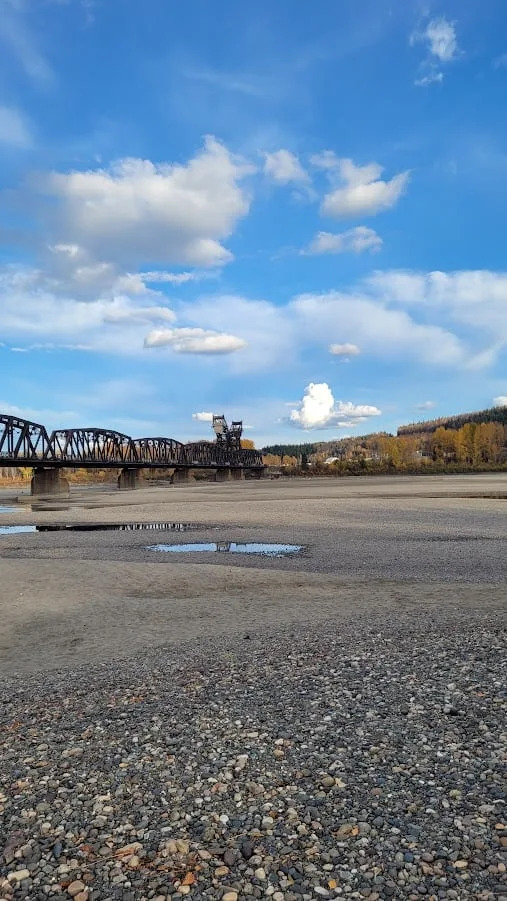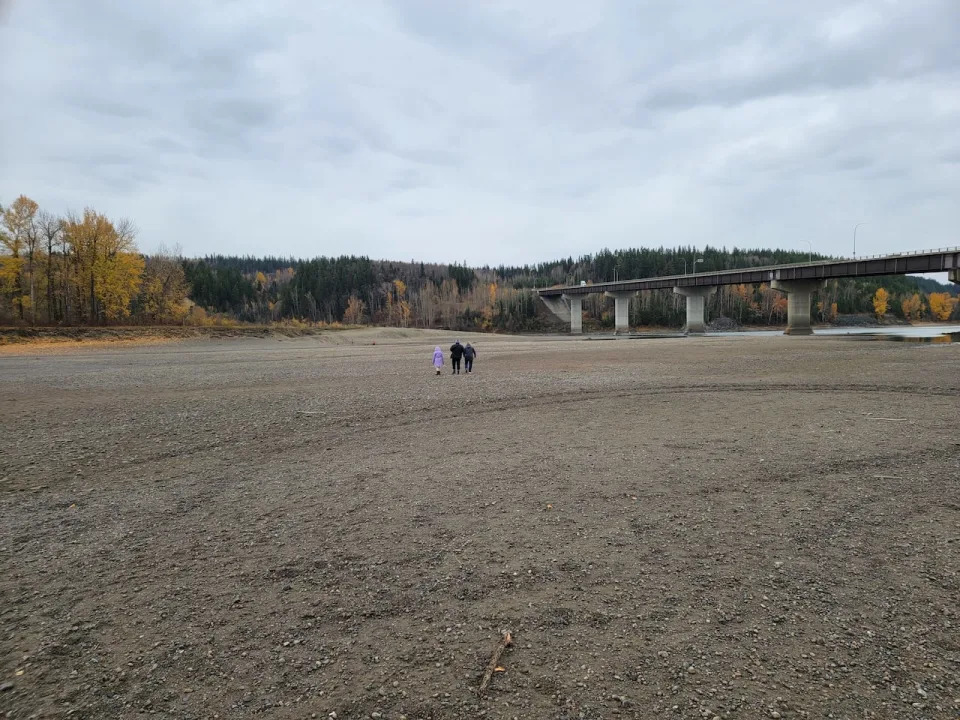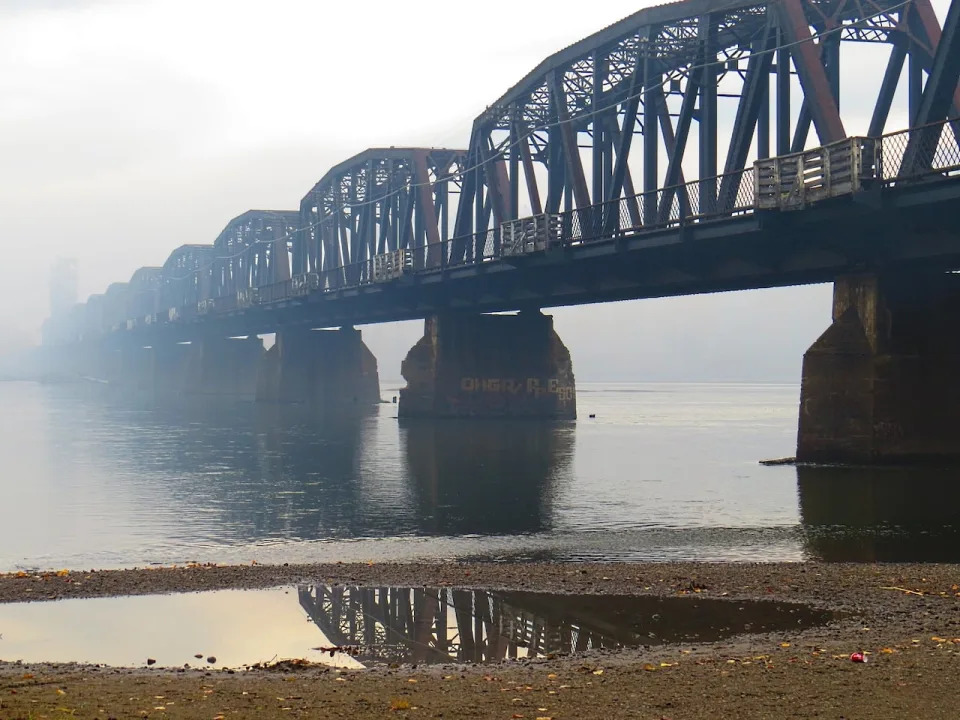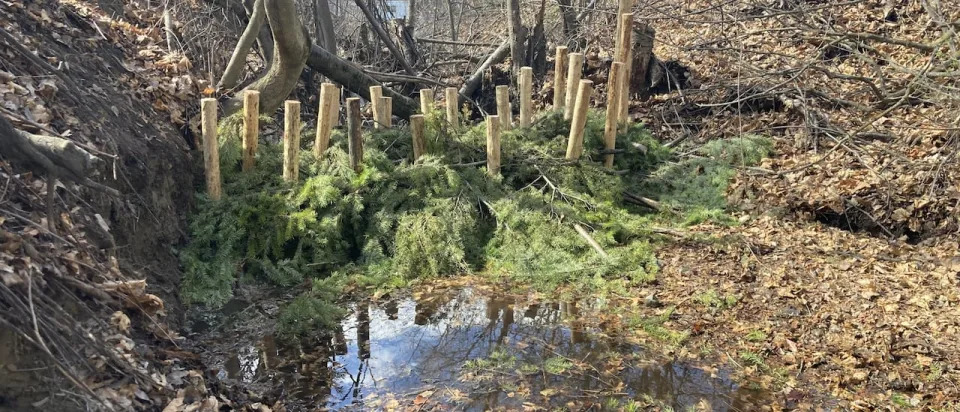FAIR COMMENT
Below are articles I have written during the Alberta Provincial Election Campaign.
The Election was held November 22, 2004 and saw the ruling PC's lose 17 seats, which still left them with an overwhelming majority of 61 seats in the legislature, returning Alberta again to a one party state.
These stories were also posted on the web at Indymedia, StriaghtGoods, and Rabble.ca, as well as being circulated over a variety of listserves.
------------------------------------------
ALBERTA UBER ALLES
(1214 words)
Ralph Klein kicked off the provincial election campaign kicking the disabled while they are down. Ralph is using his position as Premier not just as a bully pulpit, but as the pulpit of a bully. Making a caricature of disabled protestors, who rightly demanded a few crumbs from the Alberta Advantage (oil), Klein instead warned them that they looked able enough and that he would crack down on those abusing the system.
This is the same Premier who while drunk in public entered the single men’s hostel in Edmonton seeking out the poor to shove, berate, and threaten. His excuse then was he had a drinking problem.
No he has a poverty problem, he cannot believe that anyone in Alberta, er HIS Alberta, isn't as well off as the members of the PC's (Party of Calgary). He likes to bully the poor, the disabled, those who protest his decisions or lack of decisions.
Lets compare crooks, there is no evidence that people on AISH are taking advantage of us. For 5 years there has been no increase in AISH payments and for the past decade the number of people on AISH has not increased. 31,450 Albertan’s get $850 a month from AISH, half that is federal funding, excess federal tax credits for the poor get clawed back by the Alberta government. That comes out to over $2.6 million annually, less then the cost of the current Senate election.
If the disabled work their wages are used to claw back the $850. If they do work it will be at minimum wage, which is the lowest in Canada. In Alberta working full-time for minimum wage would earn a you $860 a month. The severely disabled are expected to live on $10,200 a year. That is below the national poverty level, no matter who calculates it Stats-Can or Ralph’s pals at the Fraser Institute.
If there is any financial funny business going on its in the Legislature, not in the AISH program. Take the Health minister's executive assistant for one. He got $400,000 for giving advice on health care projects, work he supposedly did but did not have any evidence of doing, and he got his contract without tender. We call that cronyism if not criminal. But in Ralph's World he calls it good government. Lets see that $400,000 would support 4000 severely disabled Albertan’s on AISH for a year, with spare change left over.
If this were the federal government doing this, Ralph would be joining his Calgary pal Steven Harper calling the Liberals crooks. Wait it did happen, it’s called Adscam.
But this is Alberta home of the longest lasting single party government in North America, if not the world. We are a single party state and have been for over 70 years. First it was 20 years of the United Farmers of Alberta then 35 years of Social Credit theocracy and now 33 of the right wing Tories. That is longer than Castro has ruled Cuba. It is longer than one party state rule in the Soviet Union.
Ralph likes to refer to the mythical volk of Alberta, as severely normal, so there cannot be anyone poor in Alberta, or injured workers, or seniors, or disabled. And woe betides those that insist they are not getting a fair shake in Ralphs Volkstadt. It’s the Alberta Advantage Uber Alles.
Peter Elzinga, a long time PC insider and the un-elected deputy Premier for Edmonton, is still managing this election for the party of Ralph, while he is employed by Suncor as legal counsel as they sue the Alberta Government over royalties they owe us.
And Ralph is going to lecture the disabled on abuse of the system. That’s a clear case of the kettle calling the pot black.
With 74 of 83 seats Ralph can bully anyone he wants from his Teflon pulpit. He can with the aplomb of a King Charles dismiss the legislature as a damned nuisance that gets in the way of his government. Nor does his view of parliamentary democracy include an opposition, they too are a nuisances, just as Cromwell was.
He can walk out of the Federal health care meeting to go gambling, dropping some cold Alberta cash into the VLT's in Quebec. Showing his political solidarity with the Quebec government of his protege; Jean Charest no doubt.
He dropped a wad that would have paid the rent and utilities for at least one person on AISH.
Ralph likes to drink, so we privatize the government liquor stores. Ralph likes to gamble so we introduce VLT's into bars. On the other hand, women’s shelters in Alberta have to beg for money to meet increased insurance costs.
He can hold another useless Senate election a $3 million dollar red herring while claiming there is no democratic deficit in Alberta. It would do Bonnie Prince Charlie proud. And like other leaders who follow the fueher principle Klein dismissed elected health board representatives two years into their mandate, because they were not Tories. They were another opposition to his government. He has dismissed school board trustees for the same reason. They voiced opposition to government cuts. Vox Populi is not popular with Ralph. If Ralph and the PC's had their way every level of government in Alberta would be dominated Tories. And opposition be damned.
And the reason for electing another senator in waiting, we already have two from the last exercise in futility in 2001, is because Alberta Tories want to reform the federal government. But no reform is needed in Alberta insists Ralph, where the legislature sits less often then in any other parliamentary democracy. In Alberta the most important matters of State are decided in closed cabinet meetings.
But that should be expected from a Premier who states in the legislature that Augusto Pinochet is just a misunderstood democrat. He was forced to overthrow a democratically elected government because it was socialist. Them reds got what they deserved. And with unabashed aplomb his evidence for this opinion was an essay he wrote for a University course. The fact he plagiarized whole sections of his essay off the internet was dismissed with a wave of a hand. And the iron fist of his Minister of Learning who met with Alberta’s University Presidents and demanded they write public letters of support for Ralph saying he didn't really cheat on his homework. In Alberta when it comes to the crime of plagiarism, to paraphrase Geoge Orwell, some undergraduates are more equal than others.
Ralph claims there is no democratic deficit in Alberta. In Calgary home of Canada's corporations and right wing lobby groups, all is well for the Party of Calgary and Ralph, the Reform, er Alliance, er Conservative Party of Stephen Harper demands fixed election dates, referendum, recall, and proportional representation in Ottawa. What is good for goosing Ottawa dare not be gandered in Alberta.
This election is being held 3.5 years into a possible 5-year mandate. And while our Teflon Emperor has proclaimed this is his last election that will mean Ralph expects to rule until 2010. By that time Alberta may be the last single party state in the hemisphere, including Cuba.
For the mythical "severely normal Albertans; Martha and Henry" Ralph may be their boy, for real Albertan’s living in Ralph’s World it’s Caveat Elector.
ALBERTA’S NEW DEFINITION OF ‘PC’ (Party of Calgary)
(2336 words)
When Ralph Klein announced shortly before the election call that his government was giving $3 billion dollars as a ‘gift’ to Alberta municipalities, it looked like another typical Tory election ploy of buying votes with our own money. But in this case there was a twist, the $3 billion was not going to be divided evenly between Alberta’s two largest cities. Rather Ralph’s hometown of Calgary was going to get $1billion, Edmonton was going to only get $750 million based on its population, while the rest of the money was to be spent across the province in smaller cities and municipal districts. The reason Ralph gave for giving Calgary more than Edmonton was revealing he stated that it was because the Mayor of Calgary had come up with the idea in the first place and asked him for the money. Once again Calgary benefited while the Capital City was short-changed by Ralph and his PC party.
In Alberta it has become clear that in this election the term PC does not mean Political Correctness, nor does it mean Progressive Conservative it’s new meaning is PARTY OF CALGARY. Having re-branded themselves the Progressive Conservative Association, deleting any reference to being a political party in their ads, the PC’s as they have been known since 1971 have become a regional party representing Central and Southern Alberta. They are an ‘association’ a corporation which runs the province from the real centre of power; Calgary. They have returned to their roots, which was in the office towers of Calgary in particular the offices of the Mannix Corporation, which hired Peter Lougheed and later Ernest Manning.
After 35 years in office as the provinces ruling party, the Social Credit party of Manning was in decline with a lame duck Premier Harry Strom. In the 1971 election the small PC caucus of six swept the province with an overwhelming majority. And has stayed in power for almost as long as their predecessor.
The success of the PC’s under Lougheed was engineered by the former quarterback by amalgamating the interests of Calgary’s Liberals and Tories and with a backroom deal with Ernest Manning to quietly throw his support behind the new party pulling southern Alberta votes in for the Lougheed team. The Socreds disappeared off the map over the next decade, slowly becoming irrelevant as the PC’s amalgamated their party along with the Liberals. Only the NDP with one member in the house stood as an opposition to the Lougheed Government.
With the oil boom of the seventies and eighties, the governing Tories could do no wrong. Until that fateful mechanism of capitalism, the boom and bust business cycle slammed into the province in the 1980’s. The recession that had been hitting the rest of the world and Canada had been avoided in Alberta with the expansion of the tar sands oil project. The boom busted. Unfortunately it busted as prices for refined oil increased, while raw product declined. The bust in Alberta was a boon for eastern Canada, in particular Ontario, where much refining was done. Alberta’s export prices were kept down for a made in Canada price, while its ability to refine, process and export to the US market were limited. This was the real crisis that caused oil executives in Calgary to leap from their executive offices in a repeat of the great Wall Street crash of 1929. Construction dried up, laying-off thousands of trade’s workers, thousands of white collar workers in the oil industry in Calgary were laid off, steel and pipe manufacturing plants closed.
In order to stabilize oil prices in Canada, the minority Liberal Government in Ottawa under pressure from the NDP introduced the NEP, (ironically named since an earlier form of the NEP was Lenin’s attempted to create a market space for capitalism in Russia in the 1920’s) and created Canada’s national Oil company PetroCanada. In Alberta this partial ‘nationalization’ of Alberta’s oil production in order to create a provincial refining processing industry is still seen to this day as having ‘caused’ the crash of the eighties. What Albertan’s forget when they mention the dreaded NEP is the famous Globe and Mail photograph of then Prime Minister Trudeau and Alberta Premier Peter Lougheed, toasting champagne glasses together over the creation of PetroCanada, as a result of the NEP. PetroCanada saved Calgary from its market forced crash. It revived the oil industry in Alberta by increasing investment in the refining process, and contrary to the gnashing of teeth and spitting of blood over the NEP, allowed for Alberta to enter an unprecedented twenty-year boom.
A room full of monkeys could have governed this province over that time, and in fact that is exactly what happened.
After Peter Lougheed retired, the natural governing party of the PC’s elected its first Edmontonian as leader; Don Getty. Getty while an Edmontonian and former football teammate of Lougheeds, was well connected with Calgarys Petroleum old boys network. He was their point man in the Provincial capital, acting an oil business consultant and lobbyist. He however was unfortunate enough to takeover the party as the economic crisis continued in Alberta. However with record oil reserves, the government was able to throw money around ‘like a drunken sailor’ in order to save collapsing farms, as well as collapsing secondary and tertiary businesses. In rural Alberta it subsidized secondary processing plants for canola, beef, and pigs. In order to save the construction industry, and maintain its rural Social Credit base it built hospitals and schools, it expanded university construction, and in order to win seniors votes it built seniors housing in the cities. And it got re-elected.
Unfortunately even though the government built much, it was unable to fund staffing for seniors homes, hospitals or universities. And it couldn’t find enough tradesmen to build infrastructure.
It invested in meat packing plants, in a hazardous waste reduction plant in Swan Hills, it began partnerships with Japanese companies in building processing plants for timber export, all with an open cheque book paid with oil money and interest from the heritage trust fund.
Getty ended his short-term premiership in a personal and political crisis. His son was busted dealing cocaine (after his parole he was hired by Tory Bagman Ron Southern of ATCO as favour to Getty), his reputation was besmirched by the party as having been a lame duck premier. The knives were out after Getty lost his seat in Edmonton to a Liberal and hadto run in Stettler in a safe seat to retain his party leadership. Getty continued to be attacked by the opposition as well as by party insiders, in particular by leadership candidate Ralph Klein. The Liberals who had not been on the Alberta political map since they lost to the United Farmers at the beginning of the 1920’s had been revived as a centre right party to contest the Tories domination of the Alberta political map.
Under Getty the party lost a record number of seats to the NDP and Liberals, and the PC’s forced Getty out. In a closely fought leadership race between Edmonton MLA Nancy Betkowski (who would later become a lame duck leader of the Liberals) and former Calgary Mayor and boozing good old boy Ralph Klein, Getty was attacked for having created a fiscal crisis in the government.
In reality Getty had primed the pump in a good old-fashioned Keynesian attempt to forestall the worst crisis the province had seen since the Great Depression.
And the Depression was a memory in the province that still brought shivers to those who had lived through it. It was this memory that had kept the Socreds in power for 35 years, it would be the NEP that would be blamed for the crisis Getty faced. Albertans have long memories of those who done them wrong and those who saved them. In the Depression it was the Socreds that challenged the ‘eastern bastards’ in Ottawa as Klein called them, after the NEP fiasco it was the Tories who challenged Ottawa. To this day Klein uses Ottawa bashing to gather round the wagons and the mere whisper of NEP is enough to silence provincial opposition politicians and federal politicians as well.
Klein won the leadership race by Getty bashing, and in no small way Edmonton bashing. If Ottawa bashing won votes in Alberta, Edmonton bashing was equally a winner in the rest of the province.
Obviously Edmonton as the Capital of the province was like Ottawa a government town, though in fact it is the largest working class city in the province, full of tax and spend bureaucrats, government workers and folks who don’t know how to balance a budget. The Tories returned to their roots in electing Klein, and once again became the Party of Calgary.
The next test of the Party of Calgary came in the provincial election of that year, which saw former Edmonton Mayor Lawrence Decore leading a revived Liberal Party face off against former Calgary Mayor Ralph Klein leading the Party of Calgary. The NDP had been the official opposition for the first time in it’s history prior to the election, but by the end of the election were wiped off the map.
Like the rest of the country and in fact the rest of the world, the province was facing a short-term deficit which was increasing the provincial debt. All levels of government were facing increasing debt as corporations and foreign investors began divesting themselves of bonds in order to have access to cash.
Once again the business cycle of capitalism was glossed over, while politicians blamed the Getty government for its excess spending. In the United States and England Ronald Reagan and Margret Thatcher were elected and blamed Keynesianism for the economic downturn. It was the big lie of debt and deficit that allowed right wing politicians to begin to move towards increased privatization and outsourcing of government services based on the demands of business lobbies with cash to invest.
Decore called for ‘brutal cuts’ to government spending, Klein called for ‘massive cuts’, Klein won. Albertans stick with the one that brung ya. The vote was, ironically against the Tory government of Don Getty, with both Klein and Decore making him the boogieman.
In Edmonton and Calgary a sense that the crisis facing the Tories could mean a Liberal victory, led to strategic voting which ended in a wipe out of all the sitting members of the NDP, a larger Liberal Opposition and the election of Ralph as Premier of Alberta.
The Tories could do no wrong in Alberta except in Edmonton, where every sitting Tory lost to the Liberals. The Edmonton Sun renamed the city Redmonton, after the Liberal party colour of Red.
It would be a black day for the city, for government services, for democracy in the province as the Klein government would adopt the Republican Agenda, the New Zealand Agenda and the Thatcher Agenda to deal with its short term deficit crisis.
The Klein Government embraced privatization and outsourcing of government services and cutting payments to the poor, the disabled, and the artistic and cultural communities. Getty style Keynesianism was replaced with Fraser Institute policies. In fact Ralph became the poster boy for the Fraser Institute and its Free Market / Less Government policies.
Calgary became the HQ not only of the Oil industry in Canada but the HQ of privatized federal corporations like CN and former Quebec companies like the CPR. It became the HQ of National Citizens Coalition, (NCC) the right wing political arm of the Fraser Institute and the Business Council on National Interest. And it gave birth to the Reform Party of Canada, led by Ernest Mannings little boy Preston. The Reform party became the Canadian Alliance and now today is the Federal Conservative Party (having dropped any pretence to be being ‘Progressive’ by removing that prefix). The current leader of the Conservative Party is Stephen Harper who was also spokesman for the NCC.
Under Klein Calgary has boomed with growth of white collar, high-income movers and shakers. While across the rest of the province secondary and tertiary industries have declined like meatpacking. Hospitals have been closed, nurses and doctors laid off, social services have been cut, work for welfare has been imposed, private secondary and post secondary schools compete with the public schools and universities, teachers have been cut.
Where there haven’t been cuts is in Northern Alberta, where there is a construction boom in the oil industry of the Tar Sands and the secondary refining and processing plants in and around Edmonton.
This later boom was originally created by the NEP and has been funded by reduced royalties that the Klein government introduced when it took over. It was these very reductions in royalties that exasperated the Alberta deficit that led to such brutal cuts in the nineties.
It is Calgary where the right wing think tanks, the political science department at the U of C, and others have launched their cross Canada attempts to promote: charter schools, privatization of liquor stores, an elected Senate, and a firewall around the province. Calgary represents the new conservative politics of the Republican Party North.
Jean Charest when he was leader of the Federal Progressive Conservative Party during that first term when Klein began his ‘revolution’ said "Alberta sets the agenda for Canada". Today Charest is Liberal Premier of Quebec and modeling his restructuring of Quebec’s social contract on what he learned from Klein, as is B.C. Premier Gordon. That Agenda is alive and well in Canadian politics provincially and federally, but let’s call a spade a spade, it’s not the Alberta Agenda anymore than Klein’s Party of Calgary represents the province, it’s the Calgary Agenda.
ALBERTA’S SENATE ELECTION-Don’t Vote It Only Encourages Them
(881 words)
For the third time in seven years Albertan’s will get the privilege of electing our Senators in waiting, which are the proverbial bridesmaids of Canadian Politics. This is a $3 million dollar farce foisted on the taxpayers of this province by Ralph Klein in order to appease his parties Calgary rightwing rump, who are the movers and shakers in the new federal Conservative party. Albertan’s are one again being led down the golden brick road by Ralph, in this election which is non-binding on the Federal government. Don’t peek behind the curtain, or the smoke and mirrors of this non-event will become clear.
It’s all about the old Reform party agenda of having a Triple E Senate, ‘Equal, Elected, Effective’, but wait the Reform party is no more. And the masses have not been clamoring for an elected Senate, heck Stephen Harper and his Conservative Party (the Reform party in wicked witch of the west drag) didn’t even raise the issue in the June Federal Election. Ralph wasn’t even going to run any of his own party candidates in the Senate election till he faced pressure from some of those same Federal Conservative faithful about what a sham a Senate election looked like when the ruling party in the province didn’t play along.
So the provincial Tories are running candidates. The newly formed Alberta Alliance (another incarnation of Mormon-Elder Randy Thorsteinson attempt at creating a rural right wing party, he was the leader of the Alberta Social Credit party in the last election) is running the majority of candidates and there are three Independents all former supporters of the Reform party.
It’s a race to the right. The provincial and federal Liberals and NDP are not running candidates, nor is the Green Party, or the Communist Party, or the Communist Party Marxist-Leninist, nor even the Natural Law Party.
During the last Senate election at least there were truly independent candidates, severely normal Albertan’s as Klein calls them, running. Not so in this non-event. And the lack of any real election presence, signs, leaflets, radio, TV or newspaper ads underlies the whole phoniness of this election of a Senator in waiting.
And given the fact that Senate appointments are a lifelong appointment to the Red Chamber, one has to wonder how you can even elect one once every twenty-five years let alone having three elections in seven years.
Did I mention that Senators are appointed? Appointed by the Government of Canada, the Senate is a Federal institution and it has not been reformed to be a Triple E Senate, despite the feeble attempts by the Calgary based right wing party known as the Reform-Alliance-Conservatives, in its early years to make this an issue.
The only place one hears of Senate Reform is from the mouths of Calgarians, such as Peter Lougheed, Preston Manning and Stephen Harper. For the rest of us in Alberta and across Canada it’s a non-issue.
And we still have Senators in waiting elected prior to this election awaiting appointment by the Federal government, so why do we need more? The fact that these previous elected Senators, members of the Reform party, like the current crop has a snowballs chance of being appointed is irrelevant. It is another shtick the right wing can use to proclaim from the office towers in Calgary of how the West Wants In and no one in Ottawa is answering the door.
Once upon a time it was about electoral reform in Canada, the agenda of the Reform party was Referendum, Recall and a Triple E Senate. As it went through its transformations into the Conservative party, it dropped all pretence to democratic reform, and is now all about States rights, err Provincial rights, Flat Taxes, Tax Reduction, Privatization, the Republican Agenda for Canada.
The real question is not about reforming the Senate but why we should even have this elitist institution, a vestigial remnant of the British Parliamentary system modeled on its House of Lords. In order to be appointed to the Senate you must be a landowner. You must own property renters need not apply. It does not even represent all the parties in the Federal House of Commons, there are neither NDP nor BQ Senators. Of course in the case of the NDP that’s because they have held that this elitist establishment should be abolished. Now there is a real reform.
We should not be electing Senators but abolishing the Senate. Real reform would be to expand the House of Commons through a system of proportional representation to make up for elimination of this archaic vestige of British colonialism.
Senate reform is not on the agenda for any of the Federal parties, proportional representation is.
In Alberta on the other hand such radical ideas challenging the severe democratic deficit we face under the one party state of Ralph Klein is not even on the horizon. Instead Ralph gives us a phony election for a phony senator. Smoke and mirrors.
When it comes to electing a Senator from Alberta the old adage; "Don’t Vote It Only Encourages Them", holds true.
For background on Abolish the Senate Campaign in 2001 see my web-site:
http://www.connect.ab.ca/~plawiuk/senate.html
THE ALBERTA LIBERALS ARE NDP LITE
(540 words)
If imitation is the highest from of flattery, Brian Mason and the NDP should be blushing. With only two members in the Alberta Legislature they have been the sharpest critics of the Ralph Klein regime. The Alberta NDP has set the agenda in Alberta for mobilizing opposition to the right.
It’s the proverbial battle of Alberta. It’s the Edmonton Oilers against the Calgary Flames, the Edmonton Eskimos against the Calgary Stampeders. It’s a case of Edmonton Reds versus Calgary Rednecks.
With the election of Kevin Taft as leader of the Liberal Party and the ‘official’ opposition, which have seven seats all from Edmonton, the Liberals have abandoned their centrist attempt to be Tory Lite and have become NDP Lite.
Since this election is a forgone conclusion, the only real challenges and races will be in Edmonton. It’s the battle for Redmonton. And Tafts Liberals keep trying to be the NDP.
They have called for public auto insurance, a long time NDP policy. They have called for tuition freezes for post secondary students, the NDP has called for a 10% rollback in tuition and a freeze.
The latest election foible Taft has thrown out is a call for a review of Alberta’s Democratic Deficit, which really is what this election should be all about. He is calling for proportional representation, which the NDP has called for over the past two elections. He has raised the issue of reducing the number of seats in the Legislature to 64, an issue the NDP raised back in 1986.
There is nothing that the Liberals have said this election that differentiates them from the NDP.
They even changed their party logo to appear more radical, they have eliminated the Lubex L that symbolized their party in the past, for a slick black and red banner, an obvious attempt to appeal to the anarchist youth vote.
The Liberals have been on a decline since their heyday over a decade ago under the leadership of Lawrence Decore. Since then they have had three leadership changes, every time they lost the election to the Tories, they lost seats, and inevitably they bring out the knives and change leaders.
Today they are a left rump in Edmonton. But the NDP has returned, and with only two MLA’s in the house has still been a more effective opposition than the Liberals, who maintain ‘official opposition’ status by the skin of their teeth. Decore’s neo-conservative Liberals are no more, the Liberals under Taft are the left of the party, and what’s left of the party.
Instead of being NDP Lite they should simply give up their pretence to being a centrist-left party and join the NDP, giving Edmontonians a solid voice of opposition to the Party of Calgary and its leader Ralph Klein. The battle is for Redmonton and it is only a matter of time before this stark choice will be made clear to Taft and company. That time is fast approaching and will be made very clear on Nov. 23.
The Liberals are only the official opposition in name and should do Edmontonians a favour and unite with the NDP.










